Ever find yourself banging out impressive pull-ups and mastering handstands, yet wondering why your gains are still playing hard to get?
That relentless pursuit of calisthenics excellence comes with its own set of challenges, doesn’t it? The burning desire for strength and aesthetics often clashes with the frustration of plateauing progress and the perpetual quest for the perfect physique.
Fear not, fellow calisthenics enthusiast, for your journey is about to take a flavorfull turn!
Welcome to the realm of the “Bulking Diet for Calisthenics,” where we decode the secret language of muscle growth and energy optimisation.
Say goodbye to the days of second-guessing your nutrition strategy and embrace a guide that speaks the same language as your passion for bodyweight mastery.
Join us as we explore the art of bulking tailored for the calisthenics warrior, dissecting the nuances of nutrition and supplementation that will catapult your performance to new heights.
It’s time to feed the fire within – let the gains feast begin.
Nutritional Guidance for Bulking Diet
Why Nutrition Matters in Calisthenics?
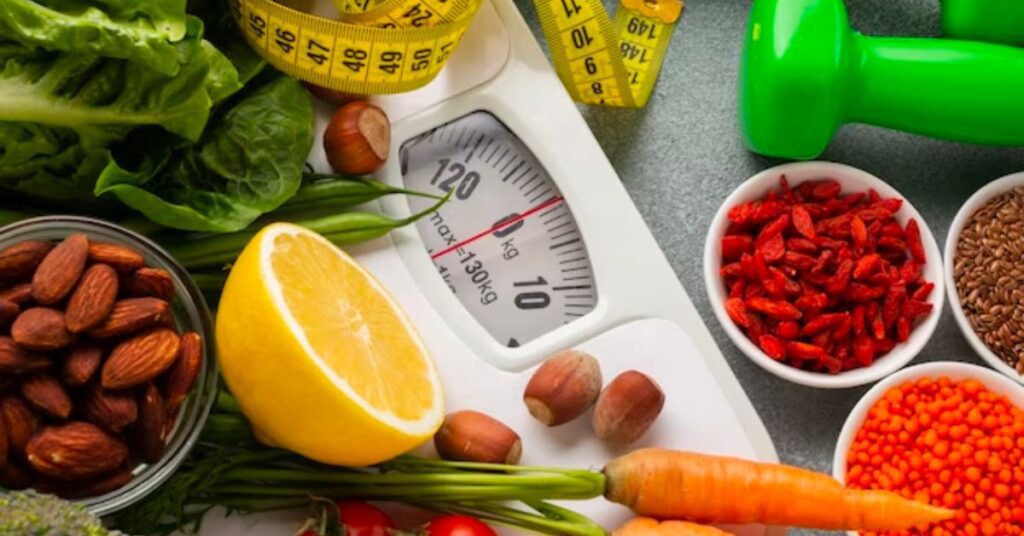
When it comes to achieving your goals in calisthenics, nutrition plays a vital role. Proper nutrition ensures that your body has the necessary fuel to perform intense workouts, support muscle growth, and aid in recovery. (*)
Without a well-designed diet, you may find it challenging to reach your full potential and optimize your performance.
What to Eat for Maximum Muscle Growth?

To maximize muscle growth, it is essential to consume a diet rich in quality protein, complex carbohydrates, and healthy fats. (*)
These macronutrients work together to provide your body with the building blocks it needs to repair and build muscle tissue.
How Much to Eat: Finding Your Caloric Sweet Spot?

Finding the right caloric intake is crucial when aiming for muscle growth. However, it is not a one-size-fits-all approach. (*)
Every individual has different caloric needs based on factors such as age, gender, weight, and activity level. To determine your caloric sweet spot, you can use online calculators or consult with a nutritionist.
Understanding Caloric Surplus in Layman’s Terms
Caloric surplus is a term frequently used in the fitness world, but what does it really mean? Simply put, it means consuming more calories than your body needs to maintain its current weight.
This surplus provides the extra energy required for muscle growth.
However, it’s important to strike the right balance as consuming too many excess calories can lead to unwanted fat gain.
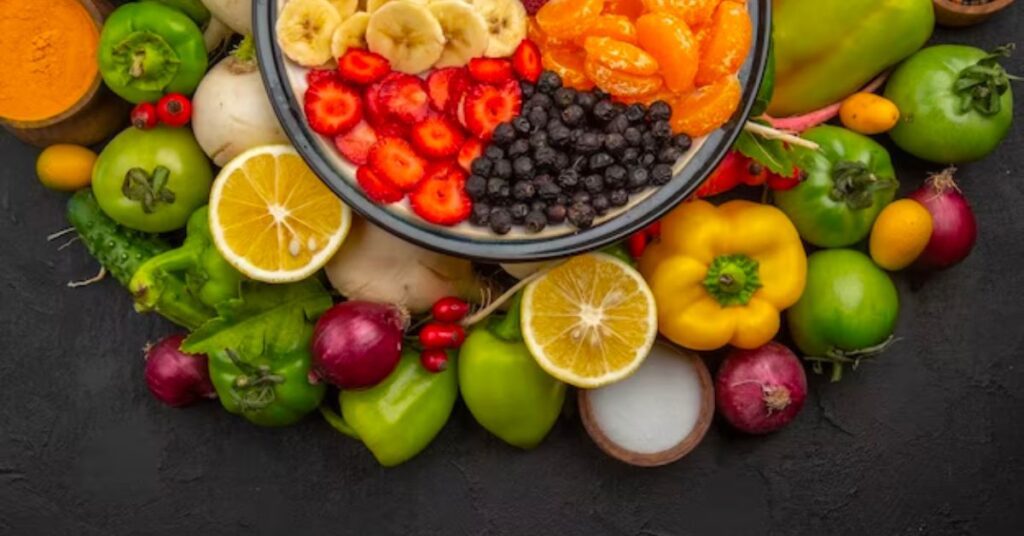
Hacks to Achieve a Surplus Without Compromising Health
Gaining muscle doesn’t mean you have to throw your health out the window. Here are a few hacks to achieve a caloric surplus while maintaining a nutritious diet:
- Opt for nutrient-dense foods: Choose nutrient-dense options like lean meats, whole grains, and fruits and vegetables, which provide a high amount of vitamins and minerals per calorie.
- Include healthy fats: Incorporate sources of healthy fats such as avocados, nuts, and seeds into your meals. These fats are not only calorie-dense but also provide essential nutrients for overall health.
- Focus on high-protein snacks: Snacking on protein-rich foods like Greek yogurt, cottage cheese, or protein bars can help meet your daily protein intake while adding fewer calories.
- Keep track of your intake: Utilise food tracking apps like MyFitnessPal or Fitbit to monitor your caloric intake and ensure you’re consistently in a surplus.
Cracking the Code: Macronutrient Ratios
Understanding macronutrient ratios is key to optimising your bulking diet.
Proteins: The Building Blocks of Strength
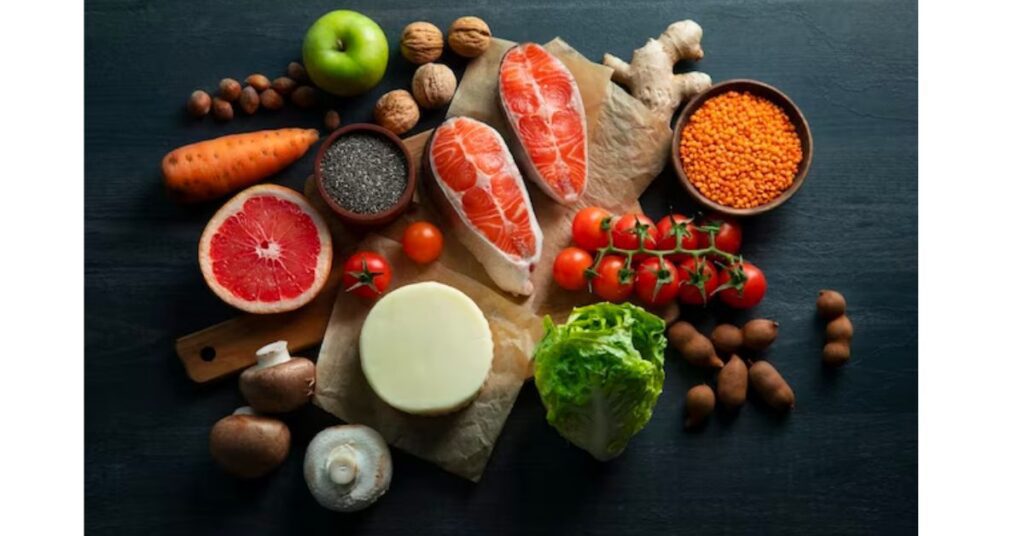
Proteins are essential for muscle repair and growth. Aim to include lean sources such as chicken breast, turkey, fish, tofu, or beans in your meals.
Shoot for around 1.2-2 grams of protein per kilogram of body weight per day.
Carbs: Your Energy Reservoir

Carbohydrates are your body’s primary source of fuel. Opt for complex carbohydrates such as whole grains, sweet potatoes, and fruits to provide sustained energy throughout your workouts.
Depending on your activity level, aim for 45-65% of your total daily calorie intake.
Fats: Friend or Foe?
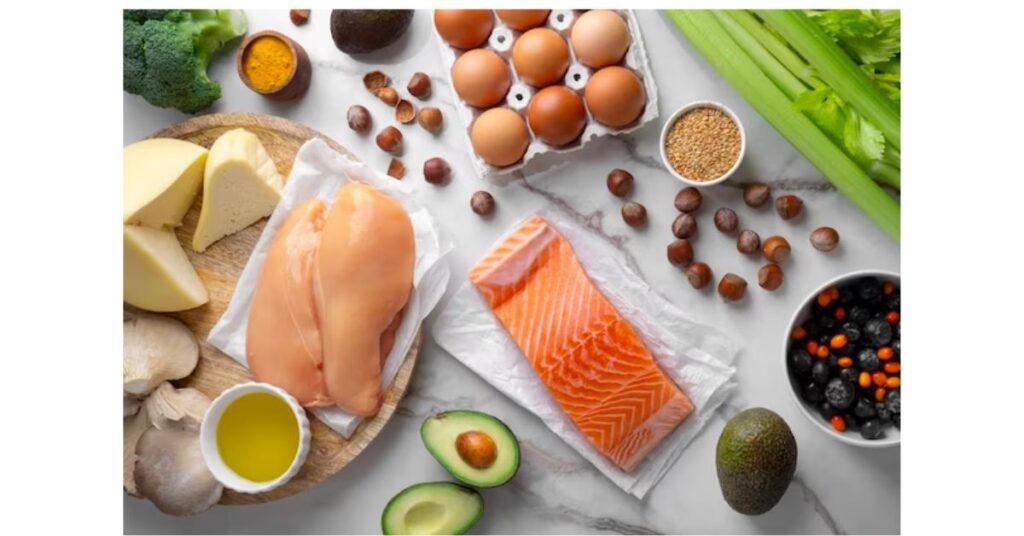
Contrary to popular belief, fats are essential for hormone production and overall health. Incorporate healthy fats from sources like avocados, nuts, olive oil, and fatty fish like salmon.
Aim for around 20-35% of your total daily calorie intake from fats.
Timing is Everything: Meals and Workouts
Timing is the unsung hero of a Calisthenics Warrior’s journey—whether it’s fueling up for the impending battle or aiding in the recovery process after conquering those intense workouts. Let’s break it down:
Pre-Workout Fueling: Energize the Warrior Within

Strike the right balance by consuming a meal or snack with a mix of carbohydrates and protein one to two hours before your workout.
Picture this: the perfect combo of a banana with almond butter, whole grain toast with scrambled eggs, or a refreshing protein smoothie teeming with fruits and veggies.
This pre-game ritual ensures your body has the energy and amino acids needed for peak performance.
Post-Workout Recovery: The Warrior’s Feast

As the dust settles from your calisthenics battle, the post-workout period becomes your secret weapon. Within 30 minutes to two hours, dive into a recovery meal that’s rich in protein and carbohydrates.
Imagine savoring grilled chicken breast with brown rice and roasted veggies, a hearty salmon salad with quinoa, or a power-packed protein shake blended with the goodness of fruits and spinach.
This culinary symphony jumpstarts muscle repair and replenishes glycogen stores, ensuring you emerge stronger for the next workout.
Sample Bulking Meal Plan
Ready to embark on a calisthenics gains odyssey that’s as delicious as it is effective?
Buckle up, because we’ve crafted a sample bulking meal plan that’s a feast for your muscles and your taste buds.
Get ready to whip up some culinary magic:
Breakfast: Muscle-Building Scramble
Ingredients:
- 3 large eggs
- Colorful veggies (bell peppers, onions, spinach)
- 2 slices of hearty whole-grain toast
- A dollop of Greek yogurt
- Handful of mixed berries
- Sprinkle of almonds
Instructions:
- Channel your inner chef and whip up a veggie-packed egg scramble.
- Toast those slices of whole-grain bread to golden perfection.
- Plate up the eggs on the toast, and on the side, indulge in a medley of Greek yogurt topped with berries and a crunchy almond sprinkle.
Lunch: Grilled Power Plate
Ingredients:
- Succulent grilled chicken breast
- Quinoa for the protein-packed base
- An array of steamed veggies
- Fresh spinach
- Grilled shrimp for that extra kick
- Cherry tomatoes for a burst of flavor
- Drizzle of balsamic vinaigrette
Instructions:
- Grill up that chicken until it’s oozing with flavor, and serve it alongside a generous helping of quinoa and steamed veggies.
- Craft a vibrant spinach salad, featuring grilled shrimp, cherry tomatoes, and a tantalizing drizzle of balsamic vinaigrette.
Dinner: Gourmet Muscle Feast
Ingredients:
- Baked salmon for the omega-3 goodness
- Roasted sweet potatoes for sustained energy
- Nutrient-packed broccoli
- Lean beef strips for a protein punch
- Brown rice to keep things wholesome
- An assortment of colorful mixed vegetables
Instructions:
- Pop that salmon in the oven until it’s perfectly flaky, then serve it up with a side of roasted sweet potatoes and broccoli.
- Stir-fry lean beef strips with brown rice and a rainbow of mixed veggies for a gourmet muscle feast.
Snacks: Power-Packed Munchies
Ingredients:
- Revitalizing protein smoothie (spinach, banana, almond milk)
- Hard-boiled eggs for a portable protein boost
- Crunchy carrot sticks for that satisfying bite
Instructions:
- Blend up a green powerhouse with a protein smoothie featuring spinach, banana, and almond milk.
- Keep your energy levels up between meals with the classic combo of hard-boiled eggs and crunchy carrot sticks.
Say goodbye to bland bulking; this meal plan is your ticket to a culinary adventure that’ll leave you fueled, satisfied, and ready to conquer the calisthenics game!
What to Eat and Avoid: Building Muscle, Not Fat
While bulking, it’s important to focus on muscle growth rather than excessive fat gain. Here are some guidelines to follow:
Muscle-Friendly Foods: Your Grocery List
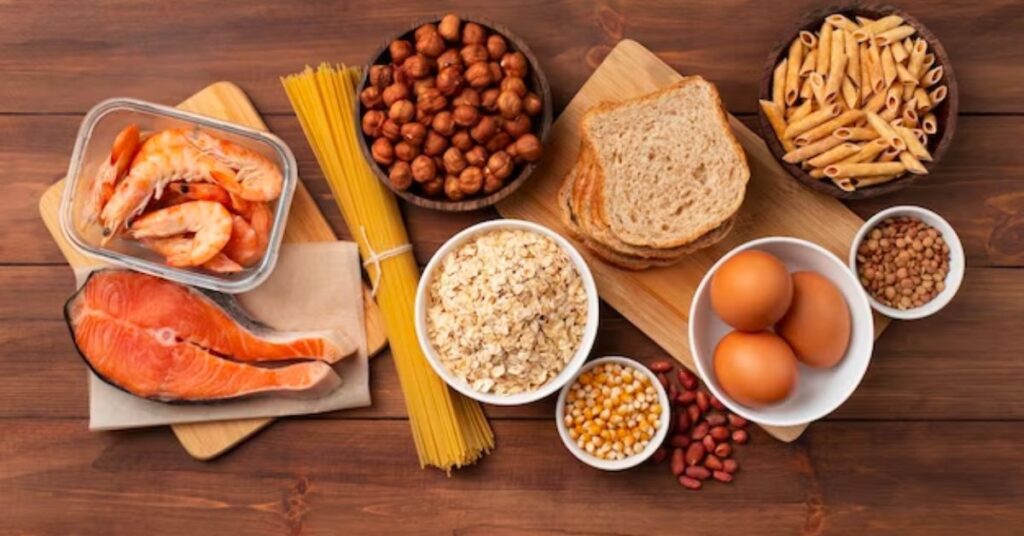
- Lean sources of protein such as chicken breast, turkey, fish, tofu, and legumes
- Complex carbohydrates like whole grains, sweet potatoes, quinoa, and fruits
- Healthy fats from avocados, nuts, seeds, olive oil, and fatty fish
The Sneaky Culprits: Foods to Steer Clear Of
- Highly processed foods high in added sugars and unhealthy fats
- Sugary beverages including soda, energy drinks, and fruit juices
- Trans fats found in fried foods and commercially-baked goods
Avoiding the Bulking Pitfall: Too Much Fat
Embarking on a calisthenics journey is exhilarating, but navigating the nutritional maze can be tricky. Here’s the deal: fats are your friends, but too much of a good thing can quickly become a pitfall.
Picture this scenario – you’re giving it your all in a challenging workout, but instead of feeling light and agile, you’re weighed down by unwanted pounds.
That’s the fat trap, my friend, and it’s a common struggle for calisthenics enthusiasts.
Let’s break it down:
- Energy Drain: Consuming excess fats can bog you down, leaving you feeling lethargic and drained during your workouts. It’s like trying to conquer pull-ups with a backpack full of bricks.
- Performance Hit: Ever wonder why your muscle-ups seem a tad sluggish? Too much fat in your diet might be the culprit, hindering your athletic performance and slowing down progress.
- Weight Woes: Calisthenics is all about strength-to-weight ratio, and excess fat can tip the scales against you. Shedding those extra pounds becomes an uphill battle, making achieving bodyweight mastery an elusive goal.
- Endurance Dilemma: Picture this – you’re mid-handstand, and suddenly, your endurance hits a wall. Excessive fat intake can compromise your stamina, making those longer holds and intense sessions a daunting challenge.
- Mindset Mayhem: Beyond the physical impact, the psychological toll of seeing your hard work hindered by unnecessary fat can be disheartening. Don’t let your mind become a battleground; conquer the fat pitfall for a healthier, more rewarding calisthenics journey. Aim for balance, choose wisely, and let your body and performance soar.
Conclusion
A well-structured bulking diet is essential to support muscle growth and optimize performance in calisthenics.
By understanding the importance of nutrition, selecting the right foods, and following practical meal plans, you can unleash your full potential as a calisthenics warrior.
Remember to personalize your own journey and experiment to find what works best for your body. Stay committed and enjoy the rewarding results of your hard work.
Remember that fitness is a journey, and your nutrition plays a significant role in reaching your goals.
With the right mindset, dedication, and a well-balanced bulking diet, you can take your calisthenics performance to new heights.
So grab those pull-up bars, get in your kitchen, and fuel your body for success!

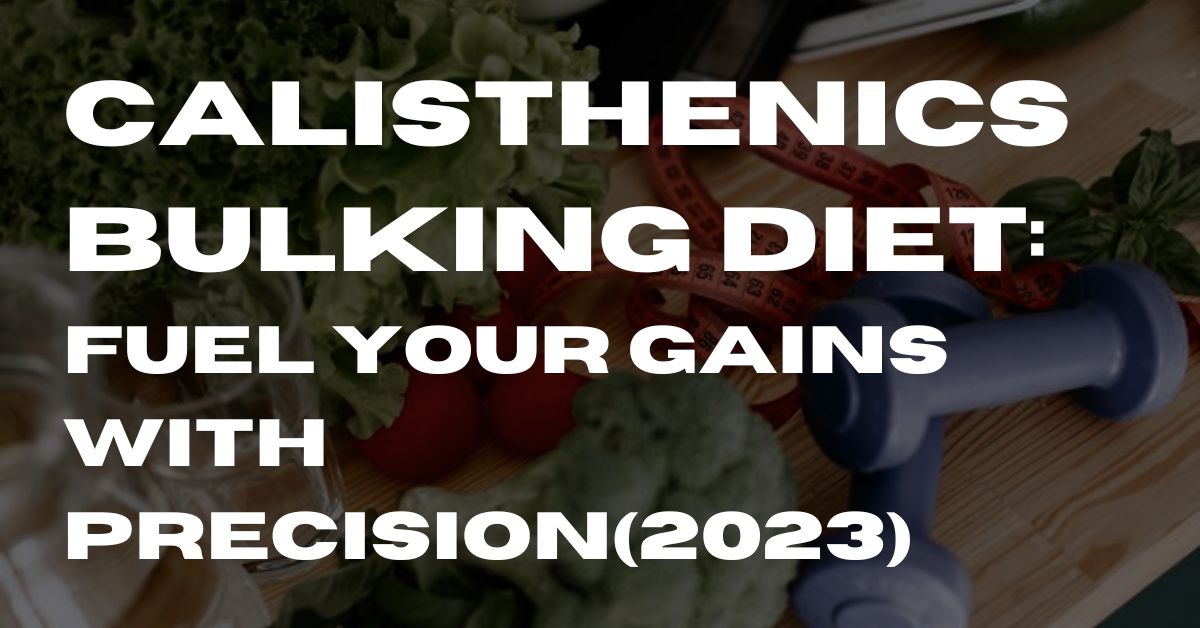
I’ve been surfing online more than three hours today, yet I never discovered any attention-grabbing article like yours.
It is lovely worth enough for me. In my opinion,
if all site owners and bloggers made just right content material as you probably did,
the web might be a lot more useful than ever before.
My brother suggested I might like this blog He was totally right This post actually made my day You can not imagine simply how much time I had spent for this info Thanks
you are in reality a just right webmaster The site loading velocity is incredible It seems that you are doing any unique trick In addition The contents are masterwork you have performed a wonderful task on this topic
What i do not realize is in fact how you are no longer actually much more wellfavored than you might be right now Youre very intelligent You recognize thus considerably in relation to this topic made me in my view believe it from numerous numerous angles Its like men and women are not fascinated until it is one thing to do with Lady gaga Your own stuffs excellent All the time handle it up
I was suggested this web site by my cousin Im not sure whether this post is written by him as no one else know such detailed about my trouble You are incredible Thanks
My brother suggested I might like this website He was totally right This post actually made my day You cannt imagine just how much time I had spent for this information Thanks
Wow wonderful blog layout How long have you been blogging for you make blogging look easy The overall look of your site is great as well as the content
Nice post. I learn something totally new and challenging on websites
It was great seeing how much work you put into it. The picture is nice, and your writing style is stylish, but you seem to be worrying that you should be presenting the next article. I’ll almost certainly be back to read more of your work if you take care of this hike.
I loved even more than you will get done right here. The overall look is nice, and the writing is stylish, but there’s something off about the way you write that makes me think that you should be careful what you say next. I will definitely be back again and again if you protect this hike.
Magnificent beat I would like to apprentice while you amend your site how can i subscribe for a blog web site The account helped me a acceptable deal I had been a little bit acquainted of this your broadcast offered bright clear idea
Somebody essentially help to make significantly articles Id state This is the first time I frequented your web page and up to now I surprised with the research you made to make this actual post incredible Fantastic job
Hi my loved one I wish to say that this post is amazing nice written and include approximately all vital infos Id like to peer more posts like this
Fantastic site Lots of helpful information here I am sending it to some friends ans additionally sharing in delicious And of course thanks for your effort
Fantastic site Lots of helpful information here I am sending it to some friends ans additionally sharing in delicious And of course thanks for your effort
I thought you did a great job here. The language is excellent and the picture is tasteful, but you come across as nervous about what you might say next. If you preserve this walk, I have no doubt that I will return more often.